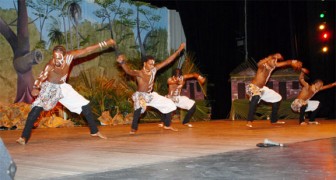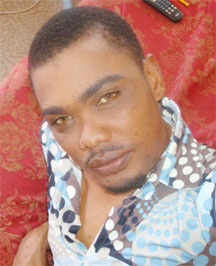Dance theatre in the Caribbean has developed in a number of interesting and increasingly important directions. Folk dance has long been at the core of these, but popular dance forms have also been growing in strength and significance, not only as a part of the dance theatre, but as a major influence in shaping it. In fact a concept of popular dance has emerged. It began to shape itself into a new form in late twentieth century dance and has become increasingly popular and influential on the stage of the twenty-first century.
This might be the best place to begin in an attempt to understand the performances of the Classique Dance Company and the place it has carved out for itself in the dance theatre in Guyana. While it is obvious that Classique is interested in different dance forms and has explored a few on stage, it is within this concept of popular dance that they seem to have found an important niche. The company appears also to be a private dance school and has clearly trained many in appropriate techniques, but from a critical standpoint, it is what they do in what may be called popular dance that has made them an interesting study, and it is there that they are important as a major force in dance in Guyana.
This kind of focus once again stood out in their most recent performance of the annual production Dance Like You Do Number 8, titled Dancehall Vibes. They have shown an interest in classical dance and have even used ballet in forms of burlesque, in folk opera, in Absurdism and experimental explorations. In a recent production, Outrageous, theyshared the stage with a guest company, Keen Dance Theatre from New York whom they hosted in collaboration with the Embassy of the USA. In that production Classique was distinctly more interesting and accomplished than their fairly lukewarm guests.


In fact, these styles have been deliberate ambitions of the company judging from the chosen titles for their productions. Outrageous and Scandalous are typical choices obviously designed with the box office in mind. They have mass appeal to the popular audience and promise the kind of exhilarating, extreme voyeur exhibitions that would bring multitudes into the dance theatre. But those outrageous titles also say something serious about form. These are not out of step with the forms that the company strives to embrace, and this is the preoccupation that has gained them their place in dance in Guyana. They have enlarged the notion of popular dance.
The vision of Classique Dance Company, founded in 2000 and directed by Clive Prowell, states that they desire “to become Guyana’s premier dance company.” At the moment they have not become that, but they have certainly developed “an audience that will recognize, appreciate and support contemporary dance.” They have also been “steadily developing works that can be easily recognized as Classique productions.” The popularisation and localisation of dance in the Caribbean theatre made strides in the last quarter of the 20th century, but Classique has been a major force in both popular dance and the popularisation of dance in Guyana during the last five years. They have developed a very large audience to whom they have appealed and that they have attracted to come to the theatre to see and be entertained by dance. And that has largely been because of the advances in popular dance.

The year 2012 is far away from that time in the Caribbean when dance was ballet and limited to a middle class elite. Folk dance found its way into the classical mainstream followed by the development of Caribbean performance influenced by indigenous traditions. Inevitably forms of popular music and their dances became a normal part of choreography on the formal stage. That has certainly been the case with reggae and dancehall, and this was well reflected in Classique’s Dancehall Vibes.
The extended sequence titled Club Tun Up was not all dance. Much of it was mime, acting and a theatrical scene rather than dance. But it was a dramatisation of dancehall. There are various ways in which contemporary dance may present, reflect or draw on the powerful pervasive phenomenon that is dancehall, and these have been attempted on stage. Choreographies have provided dances which basically just used the music; others have simply copied the dance moves in a staged performance, but those have been linear, easy or even superficial ways of performing it. The relationship between dancehall and formal choreography in contemporary dance on stage, however, is deep, multi-dimensional and presents infinite possibilities. Some of these came over in a satisfactory way in Club Tun Up.
Among the very interesting factors is that dancehall is not just a dance, dance moves or steps; it is many dances. Over the years there have been changes and variations which have included bubbling, passa-passa, dutty wine, hot wuk, daggering and six-thirty. Yet it is not only that, because it is much wider than choreography; it transcends the stage and entertainment.
Dancehall is an urban sub-culture, a social and political environment, the expression of a way of life, and a large, complex and controversial component in the popular culture of the Caribbean. It is older than most of the present revellers may think, and originated a few generations ago in the ghettoes and working class environment in Kingston, Jamaica when going to the dance halls or going to “a dance” was a popular pastime. Music was provided by “sound systems” with “juke boxes” and “turn-tables” operated by disc jockeys, “DJ’s” were later called “selectors” when DJs became premier performers. But it was not just the music, it was the social and political environment in which the people lived that eventually became both subject and producer of the music.
Against that backdrop the controversial “rude boy” era emerged and musical forms were created, moving from ska, rock steady, reggae and DJ performances to what is now known as dancehall. These musical types and the different dance moves are ephemeral, each one lasting as long as it remains popular and fashionable. They will fall out of fashion and be replaced by newer ones that find favour in the popular culture. What continues is the society and the culture which are always reflected in the music and the dance.
It is most of all the highly competitive nature of this sub-culture that was emphasized in Classique’s presentation. Attention was paid to the costuming, the ostentatious exhibitionism, the sexuality, the colour and volatility of a climate given to rivalry and violent clashes; a culture dominated by a chauvinist machismo as much as it is given to female sexuality. These were the images, symbols and the rhythms recreated in the night club setting of Classique’s dramatisation.
Those made up the most recent example of this company’s ongoing preoccupation with popular dance and the way they place a great emphasis on popular entertainment. For a long time the company, led by Clive Prowell, (often contracted by the National Dance Company in a number of Dance Seasons), was mainly carried by their best known performers. Along with Prowell, Leslyn Fraser and Kijana Lewis (a leading member of NDC) who are also prominent in drama, have been the face of the group. The other dancers are Ivor Williams, John Reman, Paul Charles, Travis Bowen, Kester Andrews and Jemain Victor, as well as MeLeesa Payne, Fiano Spencer, Onika Martin, Simone Abrams, Anastasia Sanford, Nadata Vancooten and Sasha Singh.





